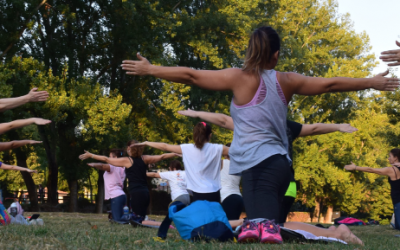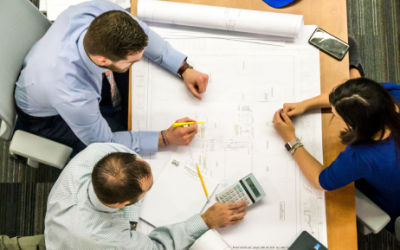What is Osteoporosis?
Osteoporosis is a condition that makes the bones weak and more fragile with an increased risk to break. Usually, osteoporosis advances over time (years) and is often only diagnosed when a fall or sudden impact causes a bone fracture. The Hip, Wrist, and Vertebrae are the most common places for a fracture in people with osteoporosis. It affects both women and men of all ethnic backgrounds. However, older women who are past menopause, are at a higher risk.
Osteoporosis can be classed into 2 types:
- Type I osteoporosis (postmenopausal osteoporosis)
Generally develops after menopause, when estrogen levels drop precipitously. These changes lead to bone loss, usually in the trabecular (spongy) bone inside the hard cortical bone.
- Type II osteoporosis (senile osteoporosis)
Typically happens after age 70 and involves a thinning of both the trabecular (spongy) and cortical (hard) bone.

Symptoms of Osteoporosis
At the early stage, there are no symptoms of bone loss. But, once your bones have been weakened enough signs and symptoms become more apparent. These include:
- Back pain, caused by a fractured or collapsed vertebra
- Loss of height over time
- A stooped posture
- A bone fracture that occurs much more easily than expected
“Osteoporosis is a condition that makes the bones weak and more fragile with an increased risk to break”
Causes of Osteoporosis
The likelihood of developing osteoporosis depends partly on how much bone mass you have in your youth. The higher your peak bone mass, the more bone you have “in the bank” and the less likely you are to develop osteoporosis as you age. Other factors including hormonal levels, dietary intake, lifestyle choices also play a role in the development, treatment, and prevention of Osteoporosis.
Metabolic factors
- Hormonal levels
Reduced sex hormones lead to bone loss. Women during Menopause have decreased the production of oestrogen levels and this is one of the strongest risk factors for developing osteoporosis. Similarly, men experience a reduction in testosterone levels as they age which is likely to accelerate bone loss.
- Thyroid problems
Increased thyroid hormone can cause bone loss. This can occur in hyperthyroidism or if you take excessive thyroid hormone medication to treat an underactive thyroid.
- Other glands
Osteoporosis has also been associated with overactive parathyroid and adrenal glands
Dietary factors
- Low calcium intake
Low calcium intake contributes to diminished bone density, early bone loss and an increased risk of fractures.
- Eating disorders
Severely restricting food intake and being underweight weakens bone in both men and women.
- Gastrointestinal surgery
Surgery that affects nutrient absorption, including calcium.
Steroids and other medications
- Chronic use of corticosteroid medications (oral or injected) e.g. prednisone and cortisone, disturbs the bone-rebuilding process, thus leading to bone loss.
Medical conditions
- Certain conditions possess a higher risk of developing osteoporosis. This may include Celiac disease, Inflammatory bowel disease, Kidney or liver disease, Cancer, Lupus, Multiple myeloma, Rheumatoid arthritis.
Lifestyle choices
Some bad habits can increase your risk of osteoporosis. Examples include:
- Sedentary lifestyle
Spending a lot of time sitting increases the risk of osteoporosis compared to an active lifestyle. This is because weight-bearing exercises are valuable to your bone health.
- Extreme alcohol consumption
Drinking regularly more than two alcoholic drinks a day increases your risk of osteoporosis.
- Tobacco use
The exact role tobacco plays in osteoporosis isn’t clearly understood, but it has been shown that tobacco use contributes to weak bones.
Treatment for Osteoporosis
Osteoporosis treatments may include prescription medications, calcium and vitamin D supplements, and lifestyle changes. They will help strengthen your bones gradually over time and prevent fractures.
“Good nutrition and regular exercise are essential for keeping your bones healthy throughout your life.”
How you can prevent Osteoporosis
Medications, healthy diet and weight-bearing exercise can help prevent bone loss or strengthen already weak bones. If you’re at risk of developing osteoporosis, you should take steps to help keep your bones healthy. This may include:
- Taking regular exercise
E.g. walking, running, swimming, weightlifting. Exercise will help you strengthen your bones and reduce bone loss. The younger you start exercising and continuing throughout life the higher the benefit.
- Healthy eating
Including foods rich in calcium and vitamin D. This may include: Low-fat dairy products. Dark green leafy vegetables, Canned salmon or sardines with bones, Soy products, such as tofu, Calcium-fortified cereals, and orange juice.
- Vitamin D sun exposure and supplementation
Vitamin D improves your body’s ability to absorb calcium and improves bone health in other ways. People can get adequate amounts of vitamin D from sunlight. If you live in areas with inadequate sunlight, then consider taking a daily supplement containing 10 micrograms of vitamin D.
- Maintaining normal weight
Underweight people have a higher risk of bone loss and sustaining a fracture. Whereas overweight people have more chances of sustaining wrist and arm fractures. Hence, having a balanced weight is beneficial for bones and overall health.
- Lifestyle changes
Such as giving up smoking and reducing, alcohol.
See also:
Resources:
https://www.nhs.uk/conditions/osteoporosis/
https://www.ageuk.org.uk/information-advice/health-wellbeing/conditions-illnesses/osteoporosis/
https://www.mayoclinic.org/diseases-conditions/osteoporosis/symptoms-causes/syc-20351968
https://www.sheffield.ac.uk/NOGG/NOGG%20Guideline%202017.pdf



